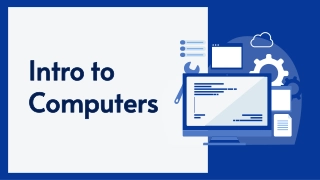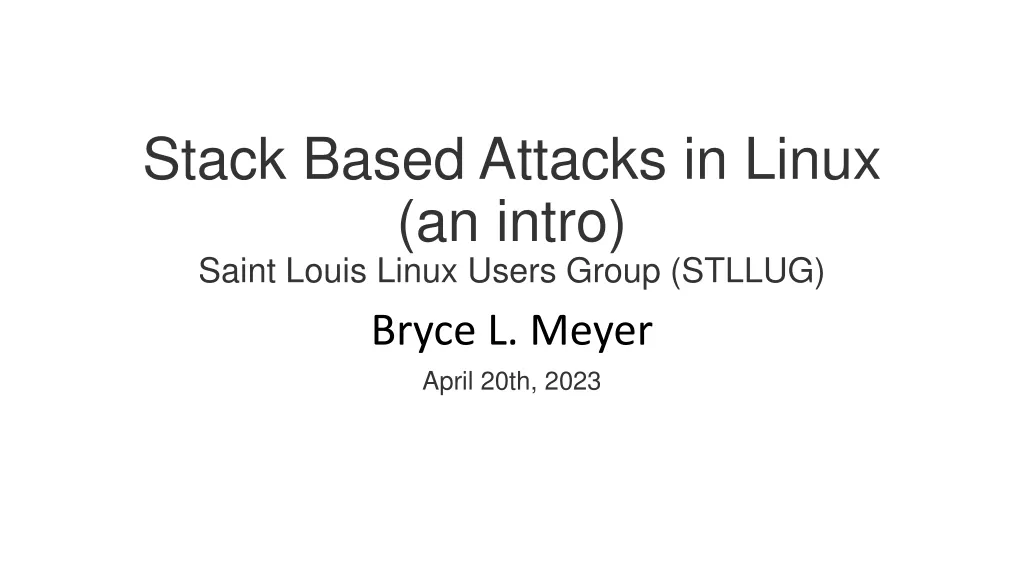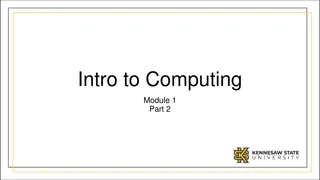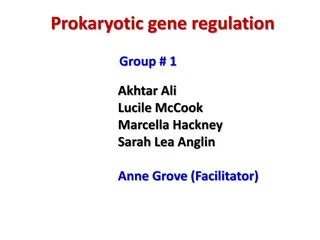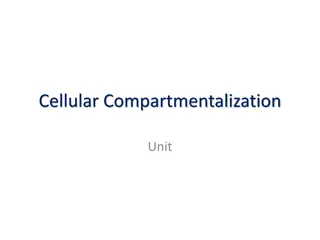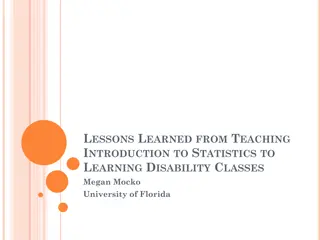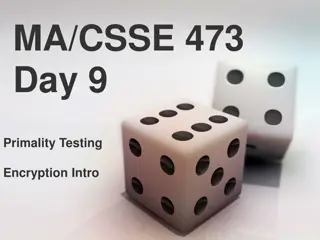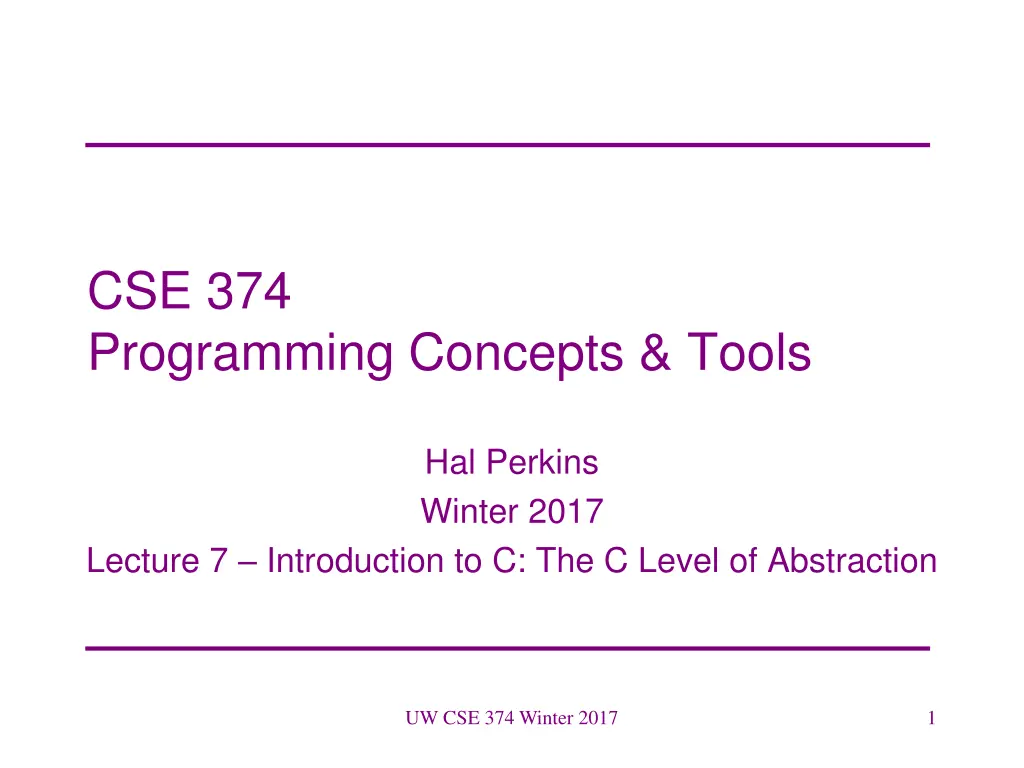
Introduction to C Programming: Concepts and Tools Winter 2017 Lecture 7
Explore the differences between C and Java, learn the basics of C programming, understand why learning C is valuable, and delve into the reasons behind using C in various applications. Discover the essence of C's low-level control over computers and its importance in understanding computer systems and software interactions.
Download Presentation

Please find below an Image/Link to download the presentation.
The content on the website is provided AS IS for your information and personal use only. It may not be sold, licensed, or shared on other websites without obtaining consent from the author. If you encounter any issues during the download, it is possible that the publisher has removed the file from their server.
You are allowed to download the files provided on this website for personal or commercial use, subject to the condition that they are used lawfully. All files are the property of their respective owners.
The content on the website is provided AS IS for your information and personal use only. It may not be sold, licensed, or shared on other websites without obtaining consent from the author.
E N D
Presentation Transcript
CSE 374 Programming Concepts & Tools Hal Perkins Winter 2017 Lecture 7 Introduction to C: The C Level of Abstraction UW CSE 374 Winter 2017 1
Welcome to C Compared to Java, in rough order of importance Lower level (less for compiler to do) Unsafe (wrong programs might do anything) Procedural programming not object-oriented Standard library is much smaller Many similar control constructs (loops, ifs, ...) Many syntactic similarities (operators, types, ...) A different world-view and much more to keep track of; Java-like thinking can get you in trouble UW CSE 374 Winter 2017 2
Our plan A semi-nontraditional way to learn C: Learn how C programs run on typical x86-64 machines Not (totally) promised by C s definition You do notneed to reason in terms of the implementation when you follow the rules But it does help to know this model To remember why C has the rules it does To debug incorrect programs Learn some C basics (including Hello World! ) Learn what C is (still) used for Learn more about the language and good idioms Towards the end of the quarter: A little C++ UW CSE 374 Winter 2017 3
Some references The C Programming Language, Kernighan & Ritchie K&R is a classic, one that every programmer must read. A bit dated now (doesn t include C99 or C11 extensions), but the primary source Essential C, Stanford CS lib, http://cslibrary.stanford.edu/101/EssentialC.pdf Good short introduction to the language link on CSE 374 home page cplusplus.com (reference site also linked from 374 home page) Good current reference for standard library UW CSE 374 Winter 2017 4
Why C? Small language (not very many features) relatively easy to understand and implement efficiently Provides low-level control over the computer when needed, closer to assembly (machine) language But still possible to write reasonably portable code Still used in: Embedded programming Systems programming High-performance code And for CSE 374: learning to program in C will give you better insight into how computers work and how software interacts with the machine UW CSE 374 Winter 2017 5
Address space Simple model of a running process (provided by the OS): There is one address space (an array of bytes) Most common size today for a typical machine is 264 or 232 For most of what we do it doesn t matter 264 or 232 per process is way more memory than you have, but OS maintains illusion that all processes have this much even if they don t Subscripting this array takes 64 (or 32) bits Something s address is its position in this array Trying to read a not-used part of the array may cause a segmentation fault (immediate crash) All data and code for the process are in this address space Code and data are bits; program remembers what is where O/S also lets you read/write files (stdin, stdout, stderr, etc.) UW CSE 374 Winter 2017 6
Address-space layout The following can be different on different systems, but it s one way to understand how C is implemented: code globals heap stack So in one array of 8-bit bytes we have: Code instructions (typically immutable) Space for global variables (mutable and immutable) (like Java s static fields) A heapfor other data (like objects returned by Java s new) Unused portions; access causes a seg-fault A call-stack holding local variables and code addresses ints typically occupy 4 bytes (32 bits); pointers 4 or 8 (32 or 64) depending on underlying processor/OS (64 on our machines) UW CSE 374 Winter 2017 7
The stack The call-stack (or just stack) has one part or frame (compiler folks call it an activation record) for each active function (cf. Java method) that has not yet returned It holds: Room for local variables and parameters The return address (index into code for what to execute after the function is done) Other per-call data needed by the underlying implementation UW CSE 374 Winter 2017 8
What could go wrong? The programmer has to keep the bits straight even though C deals in terms of variables, functions, data structures, etc. (not bits) If arr is an array of 10 elements, arr[30] accesses some other thing Storing 8675309 where a return address should be makes a function return start executing stuff that may not be code . . . Correct C programs can t do these things, but nobody is perfect On the plus side, there is no unnecessary overhead like keeping array lengths around and checking them! Okay, time to see C . . . UW CSE 374 Winter 2017 9
Hello, World! Code: #include<stdio.h> int main(int argc, char**argv) { printf("Hello, World!\n"); return 0; } Compiling: gcc -o hello hello.c (normally add -Wall -g -std=c11) Running: ./hello Intuitively: main gets called with the command-line args and the program exits when it returns But there is a lot going on in terms of what the language constructs mean, what the compiler does, and what happens when the program runs We will focus mostly on the language UW CSE 374 Winter 2017 10
Quick explanation #include<stdio.h> int main(int argc, char**argv) { printf("Hello, World!\n"); return 0; } #include finds the file stdio.h (from where?) and includes its entire contents (stdio.h describes printf, stdout, and more) A function definition is much like a Java method (return type, name, arguments with types, braces, body); it is not part of a class and there are no built-in objects or this An int is like in Java, but its size depends on the compiler (it is 32 bits on most mainstream Linux machines, even x86-64 ones) main is a special function name; every full program has one char** is a long story UW CSE 374 Winter 2017 11
Pointers Think address, i.e., an index into the address-space array If argv is a pointer, then *argv returns the pointed-to value So does argv[0] And if argv points to an array of 2 values, then argv[1] returns the second one (and so does *(argv+1) but the + here is funny) People like to say arrays and pointers are the same thing in C . This is sloppy talking, but people say it anyway. Type syntax: T* describes either NULL (seg-fault if you dereference it) A pointer holding the address of some number of contiguous values of type T How many? You have to know somehow; no length primitive UW CSE 374 Winter 2017 12
int main(int argc, char**argv) Pointers, continued So reading right to left: argv (of type char**) holds a pointer to (one or more) pointer(s) to (one or more) char(s) Fact #1 about main: argv holds a pointer to j pointers to (one or more) char(s) where argc holds j Common idiom: array lengths as other arguments Fact #2 about main: For 0 i j where argc holds j, argv[i] is an array of char(s) with last element equal to the character \0 (a zero byte, which is not the char 0 ) Very common idiom: pointers to char arrays ending with \0 are called strings. The standard library and language rely on this idiom [Let s draw a picture of memory when hello runs.] UW CSE 374 Winter 2017 13
Rest of the story #include<stdio.h> int main(int argc, char**argv) { printf("Hello, World!\n"); return 0; } printf is a function taking a string (a char*) (and often additional arguments, which are formatted according to codes in the string) "Hello, World!\n" evaluates to a pointer to a global, immutable array of 15 characters (including the trailing \0 ; and \n is one character) printf writes its output to stdout, which is a global variable of type FILE* defined in stdio.h How this gets hooked up to the screen (or somewhere else) is the library s (nontrivial) problem Return value from main is program s exit code (caller can check, e.g., shell s $?) UW CSE 374 Winter 2017 14
But wait, theres more! Many variations that we will explore as time permits, starting with the next homework Accessing program command-line arguments (argc and argv) Other I/O functions (fprintf, fputs, fgets, fopen, ) Program exit values Strings much ado about strings Strings as arrays of characters (local and allocated on the heap) Updating strings, buffer overflow, \0 String library (<string.h>) And more (structs, dynamic memory, ) UW CSE 374 Winter 2017 15
Advice Start reading K&R (C Programming Language) or your other favorite C book to get a view of how things are intended to work Use web/books to look up facts ( what s the C function to compare strings , how do I format an integer for output in printf ) C/C++ reference link on 374 web is a good start Try stuff write little programs, experiment Need to write/run code as well as read about it UW CSE 374 Winter 2017 16


